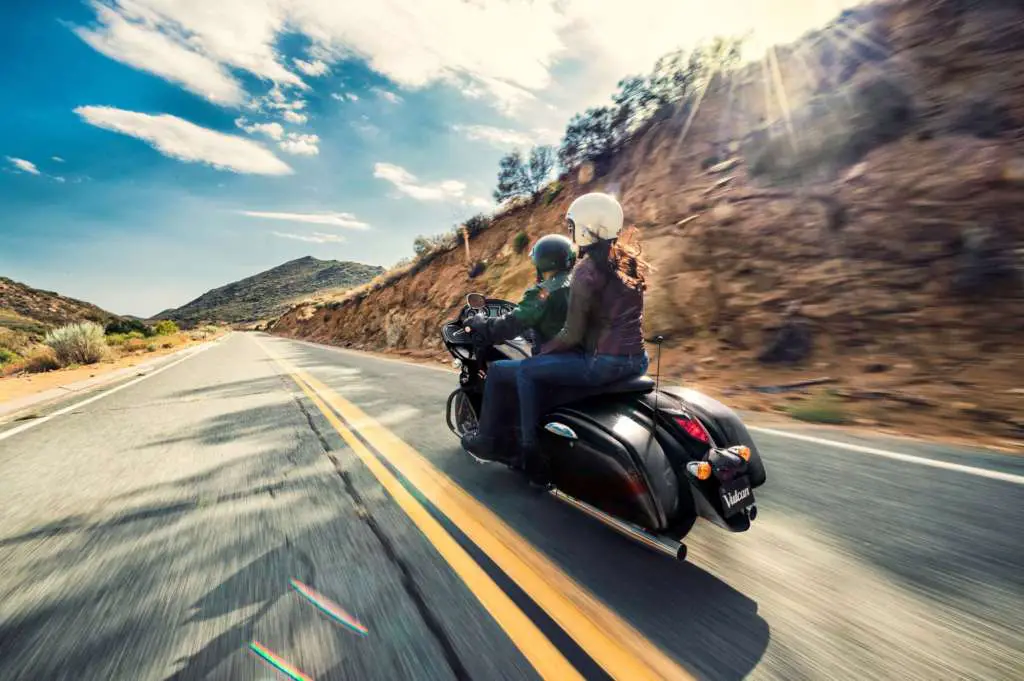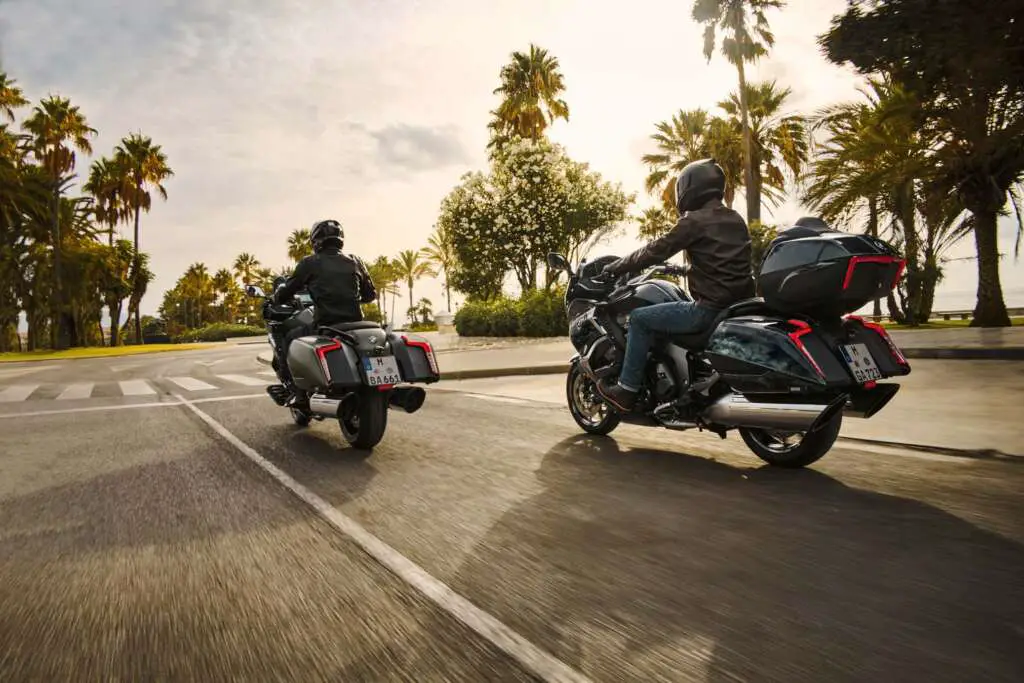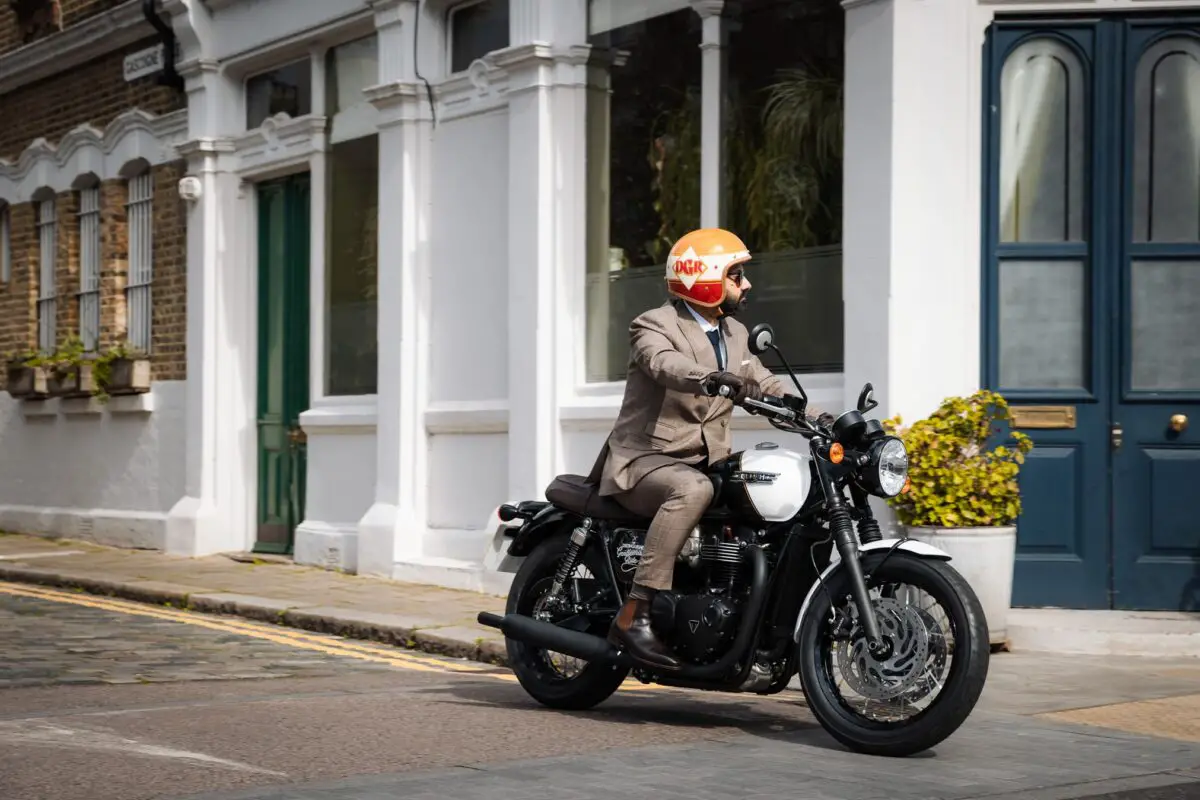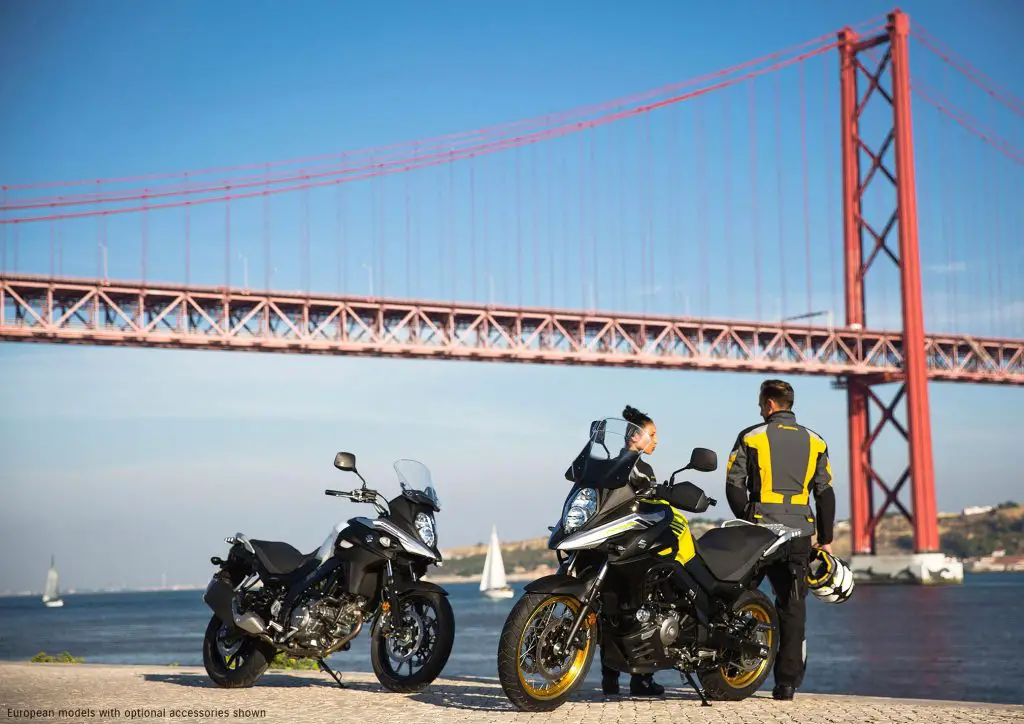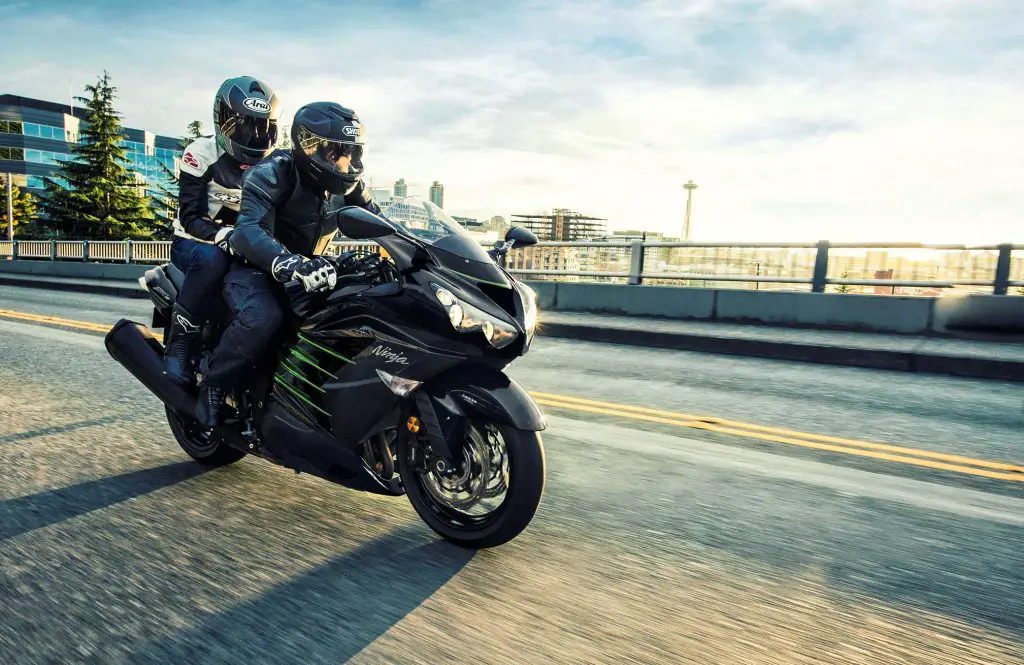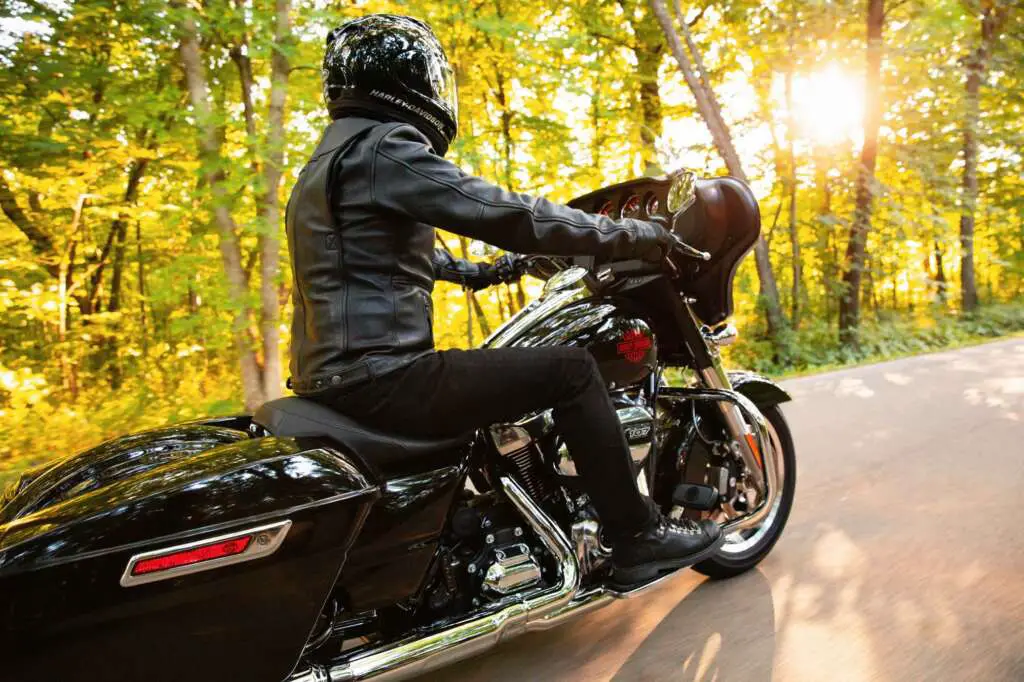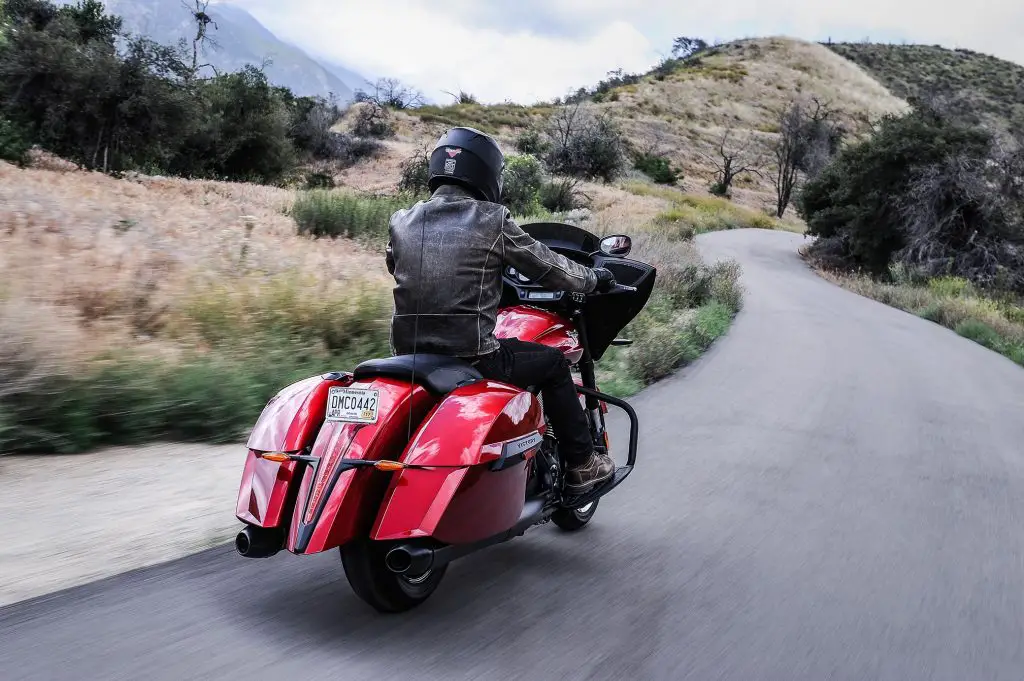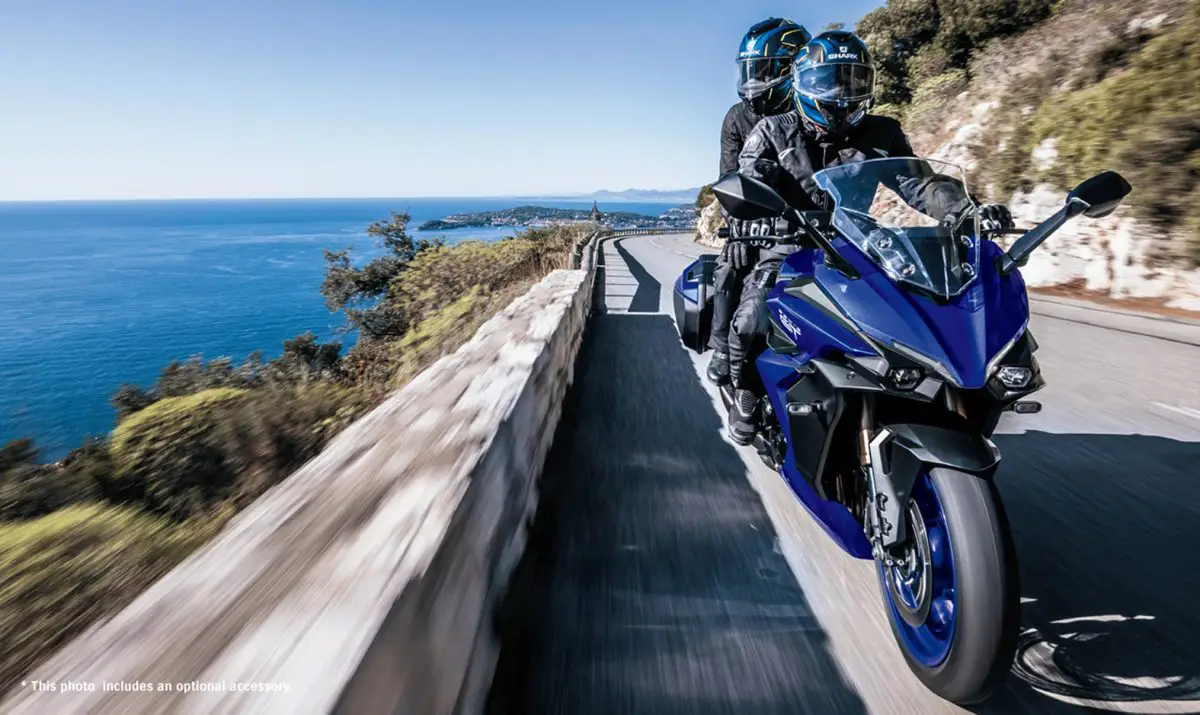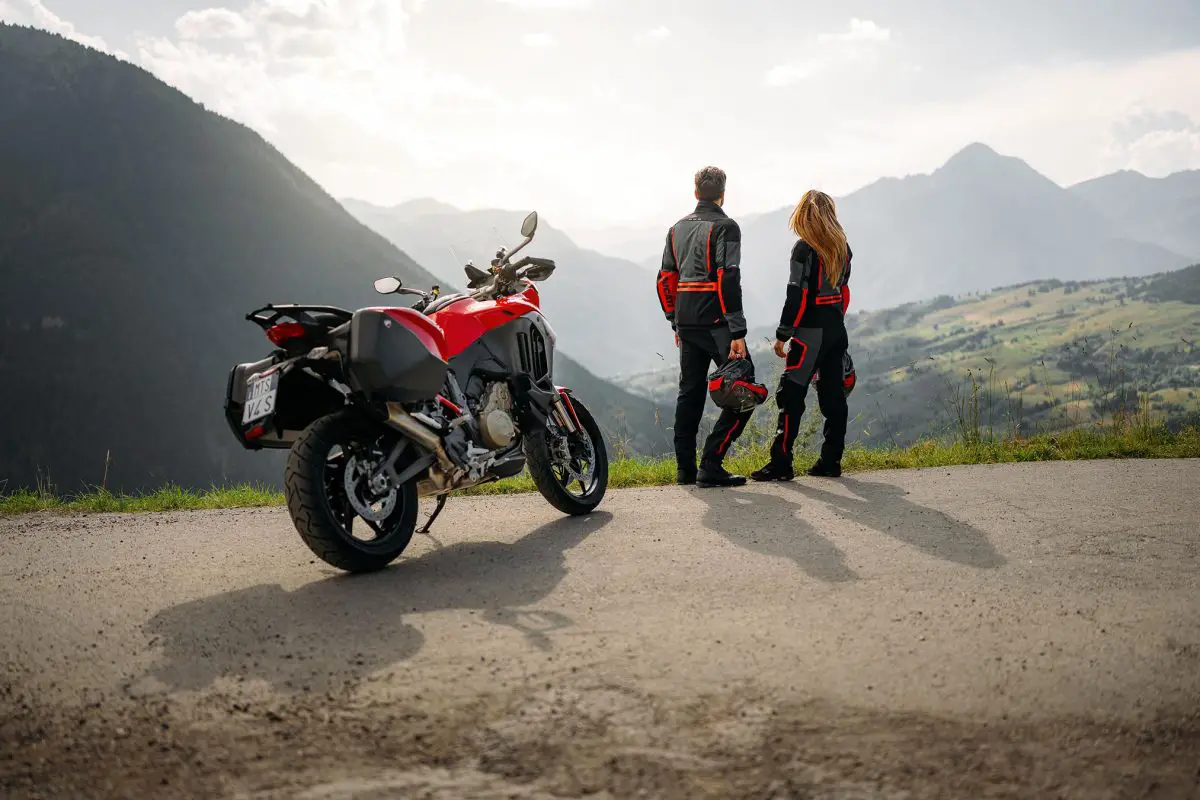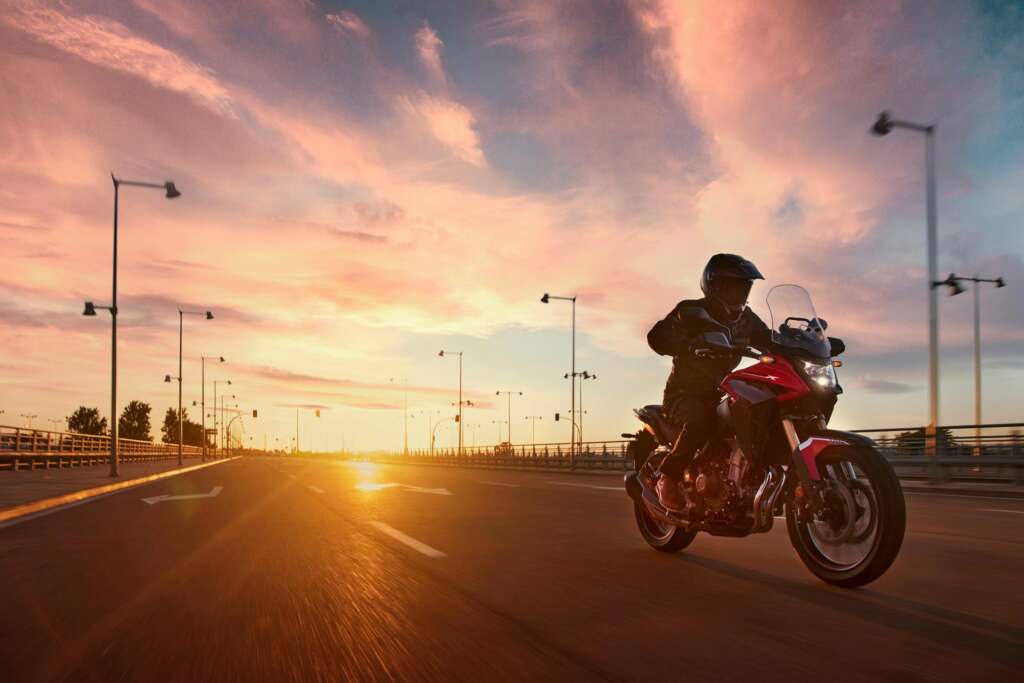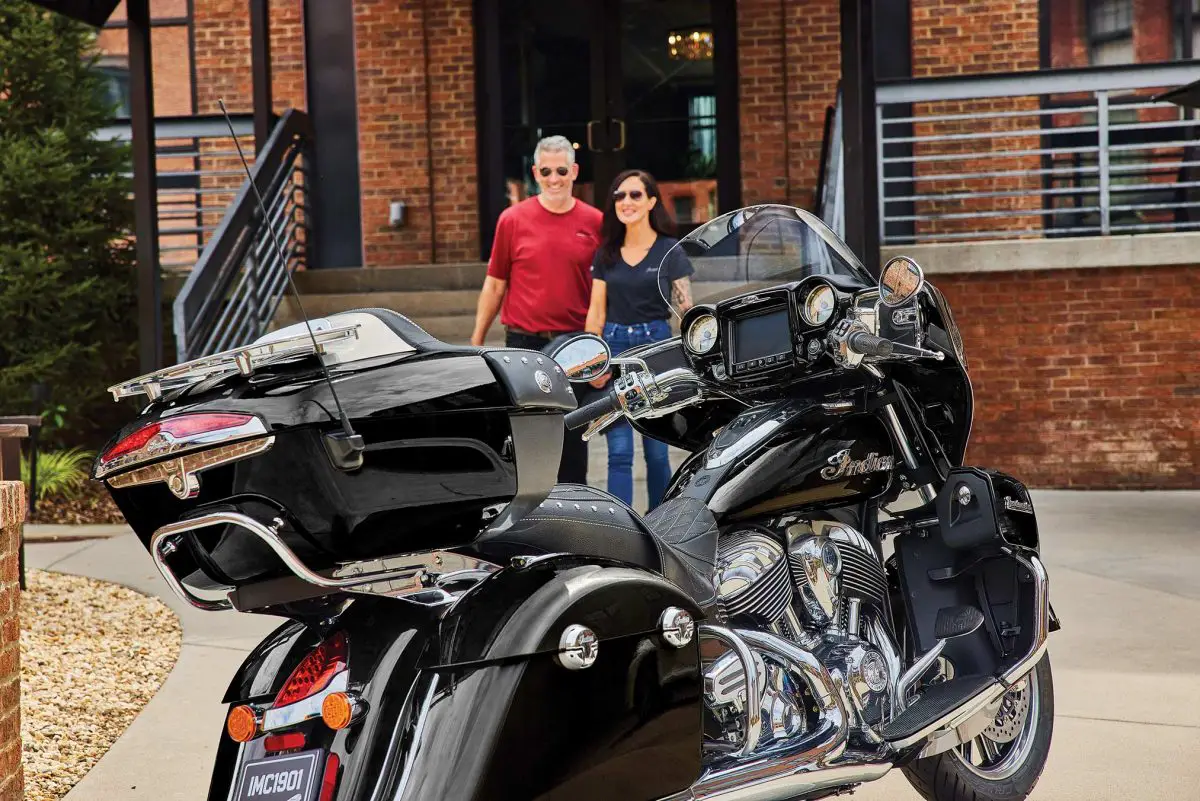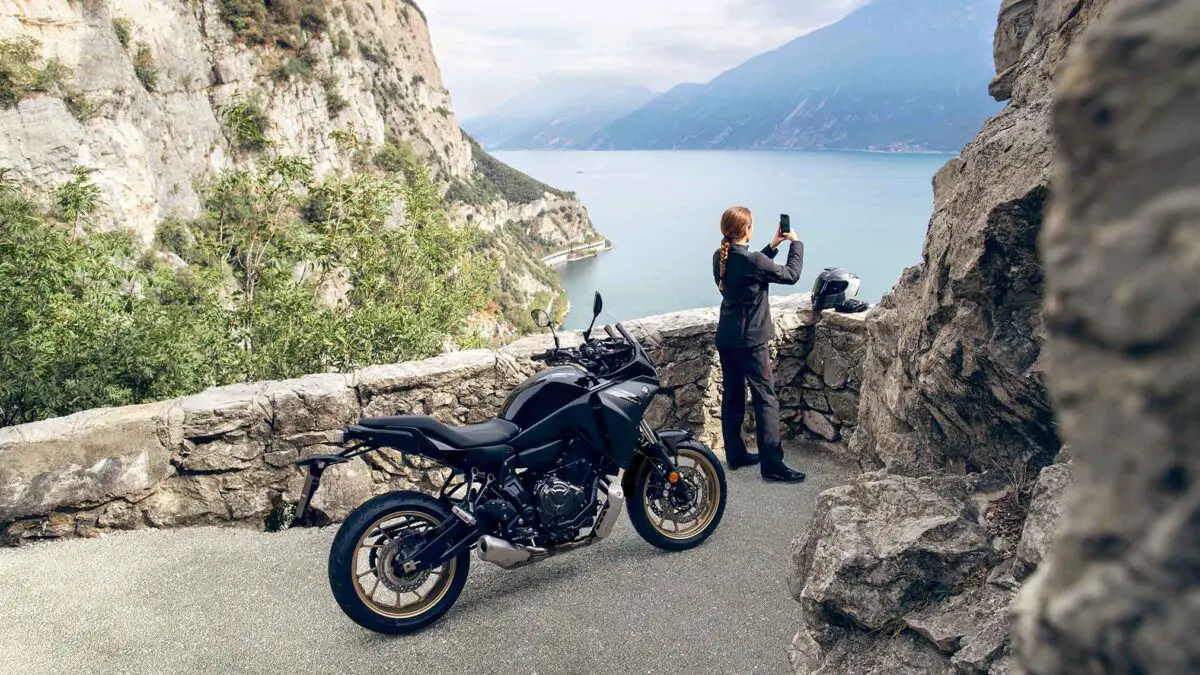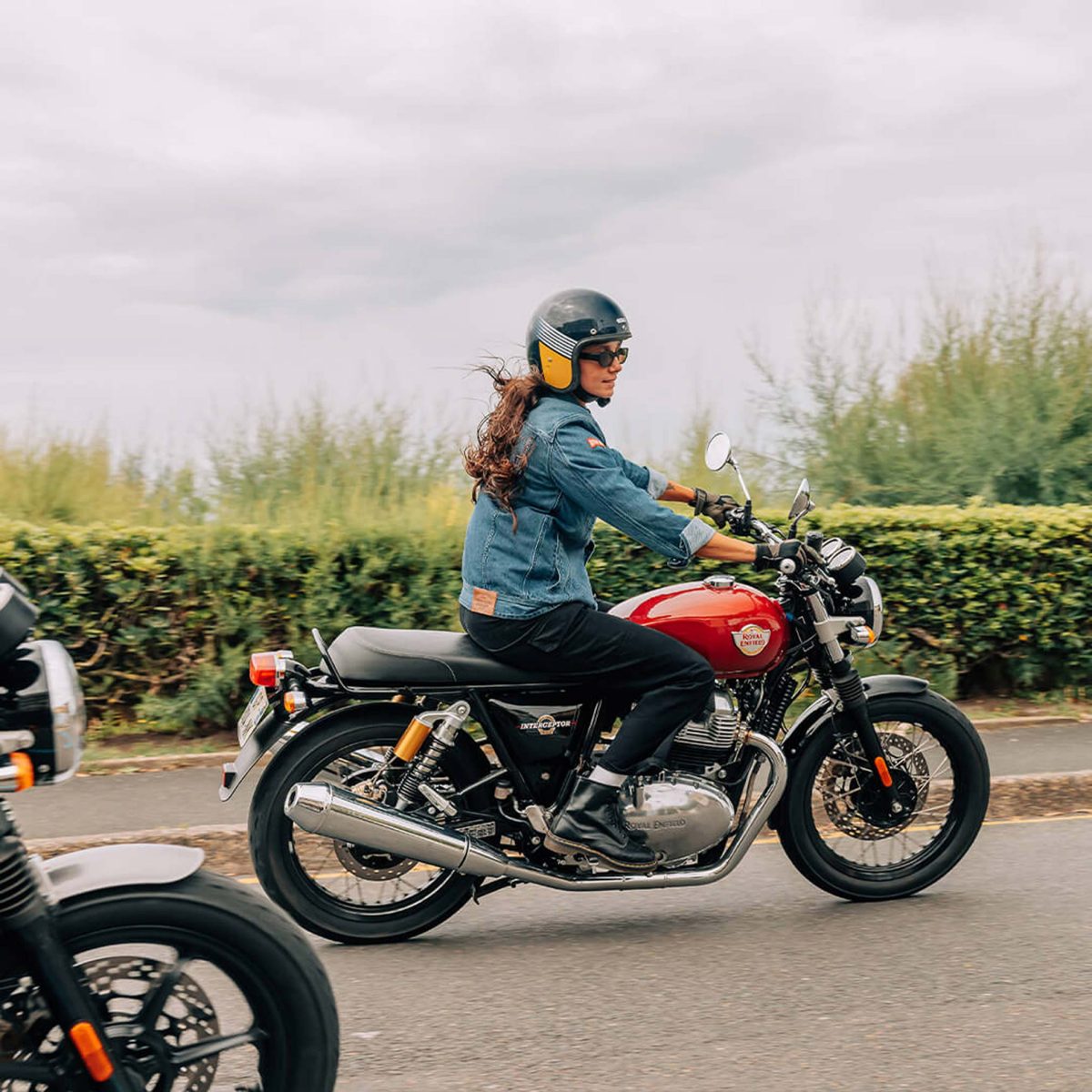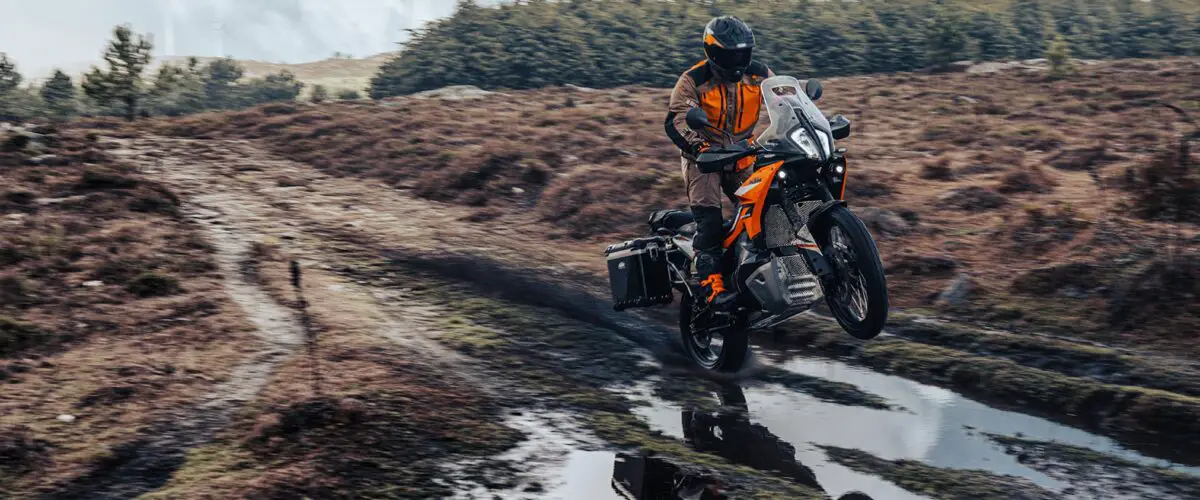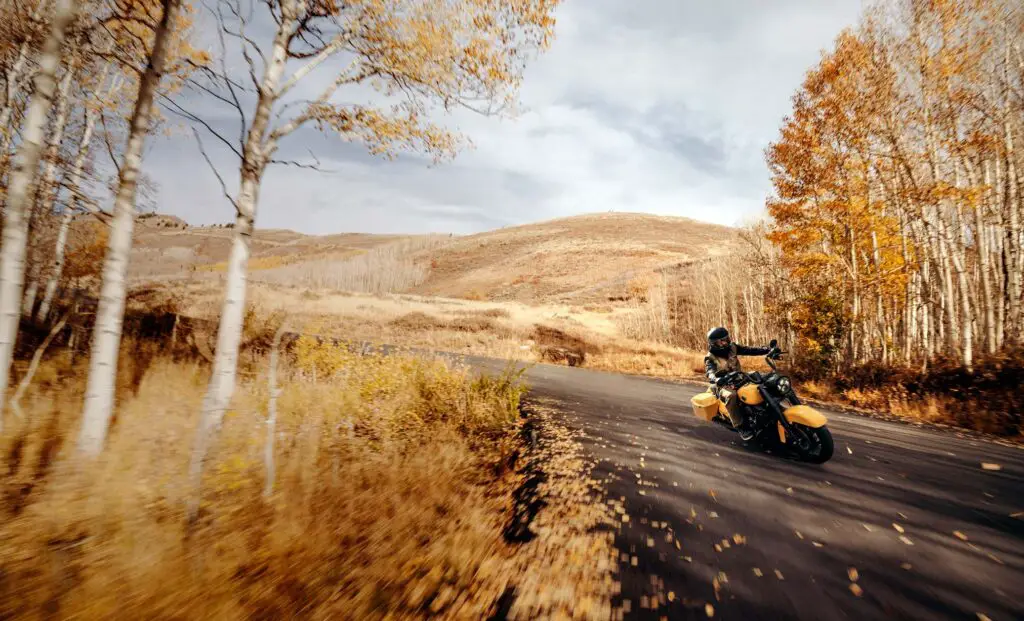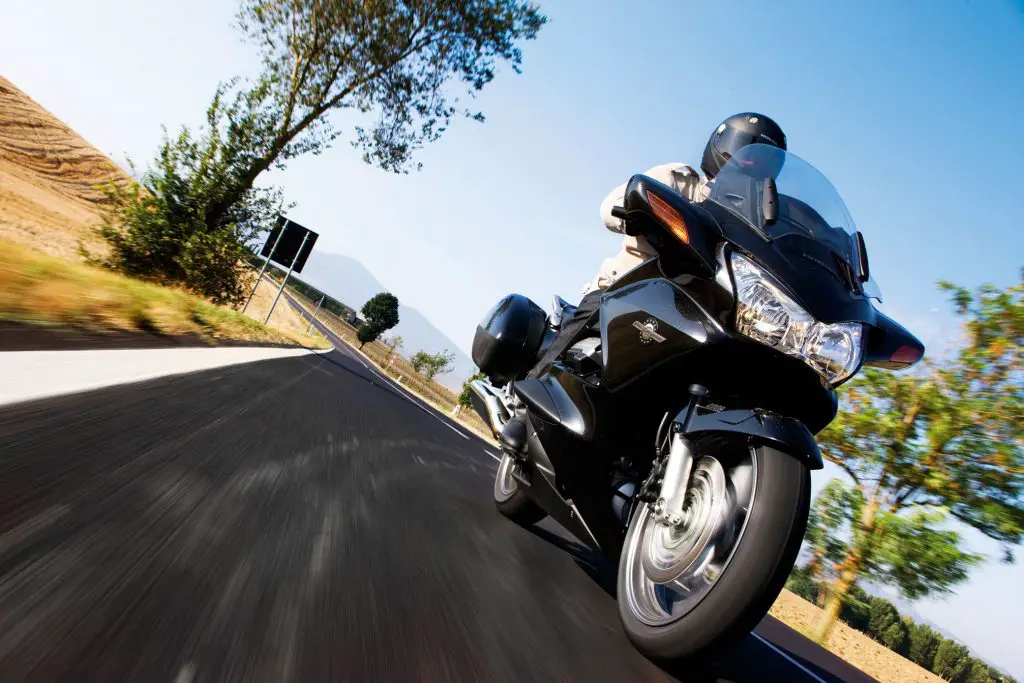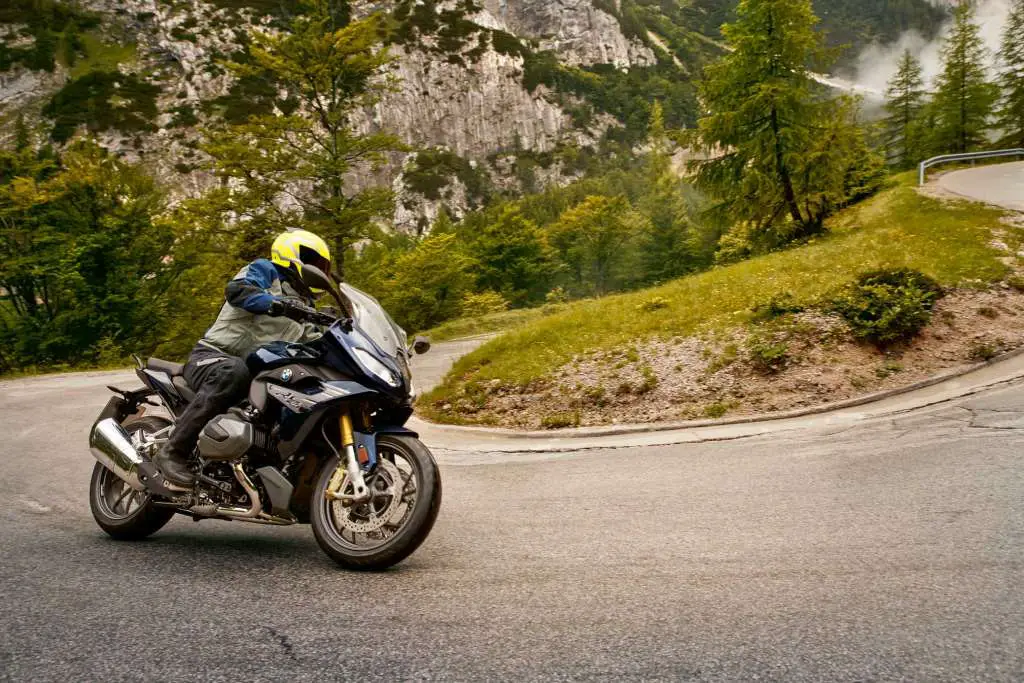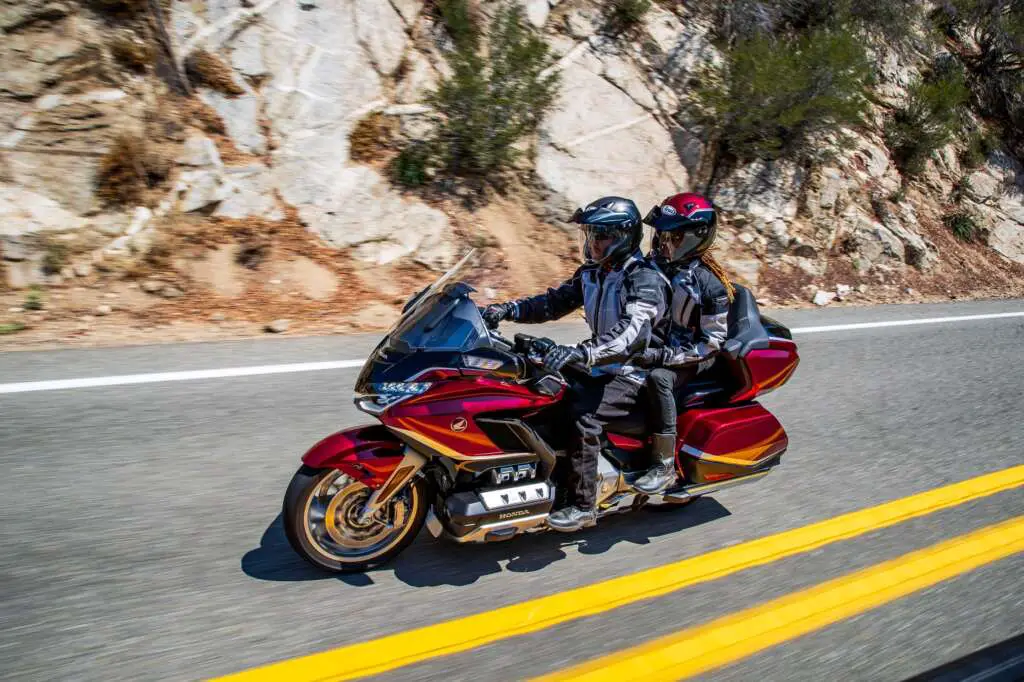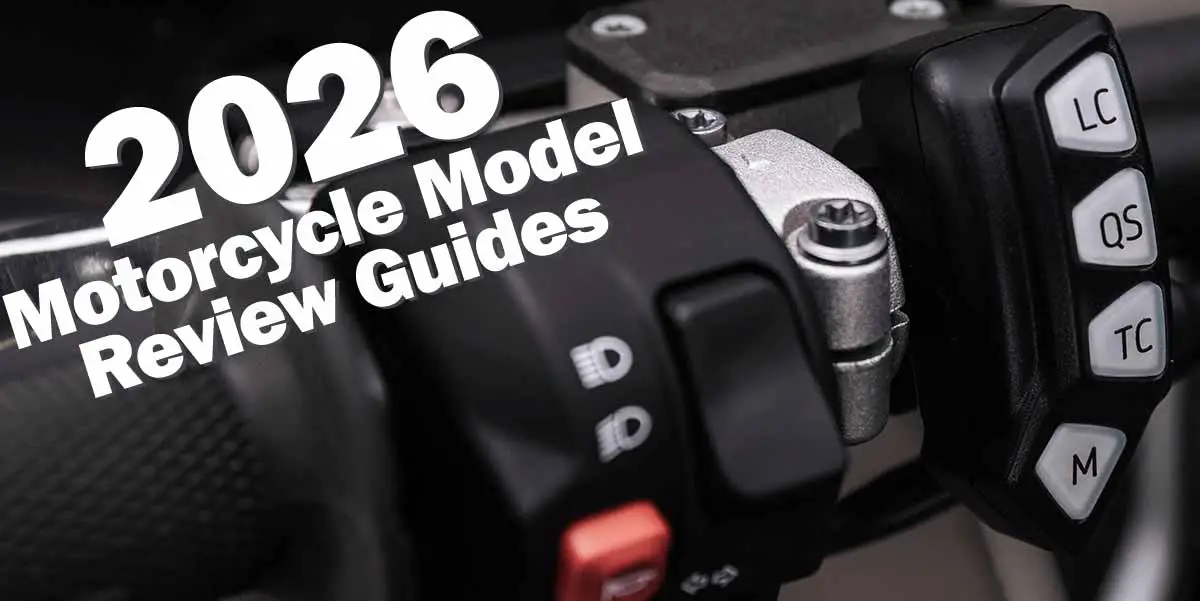🌍 Adventure & Touring Basics
From weekend getaways to cross‑continent odysseys, touring is the art of turning the road into your home. Comfort, preparation, and mindset are the keys.
Section 1.1, What is Motorcycle Touring?
Touring is the art of turning a motorcycle ride into a journey. Unlike short commutes or weekend blasts, touring means
covering distance with purpose: exploring new regions, testing endurance, and learning how to live comfortably on two wheels.
It’s not just about the destination, it’s about the rhythm of the road, the challenge of adapting to weather, and the joy of discovering places
you’d never see from a car or plane. Touring is where motorcycles transform from machines into companions.
Section 1.2, Why Touring Matters
- Freedom: Touring gives you the ability to go anywhere, anytime. You’re not bound by flight schedules or hotel check‑ins.
- Discovery: Every mile brings new landscapes, cultures, and people. Touring is travel at human speed.
- Endurance: Long rides teach patience, planning, and resilience. You learn to manage fatigue, weather, and mechanical quirks.
- Community: Touring connects you with other riders. Gas stations, campgrounds, and roadside diners become hubs of shared stories.
Touring is also a confidence multiplier. Once you’ve ridden 500 km in a day, a 50 km commute feels effortless.
Once you’ve crossed a border, your local rides feel richer.
Section 1.3, New Riders in Touring
For new riders, the idea of a multi‑day trip can feel intimidating. But touring doesn’t have to mean crossing continents.
It can start with a single‑day loop or a weekend getaway. Each trip builds confidence and teaches lessons about comfort, packing, and pacing.
🔍 Tips for New Touring Riders
- Start small: Begin with 100–200 km day trips. Build up to weekends, then longer tours.
- Pack light: Essentials only. Overpacking is the #1 rookie mistake.
- Comfort first: A seat cushion, throttle rocker, or padded grips can transform your ride.
- Plan fuel stops: Know your bike’s range. Don’t gamble on “maybe there’s a gas station ahead.”
- Break often: Stop every 90 minutes to stretch, hydrate, and reset your focus.
🚫 Common Mistakes for New Riders
✅ Reality: Touring is about endurance, not speed.
✅ Reality: Versatile gear and layers beat bulk.
✅ Reality: Touring means riding through changing conditions. Be ready with rain gear.
📊 Section 1.4, Beginner Touring Checklist
| Item | Why it Matters |
|---|---|
| Rain gear | Weather changes quickly on the road |
| Seat cushion | Prevents fatigue on long rides |
| Phone mount + charger | Navigation and communication |
| Water bottle | Hydration is critical |
| Basic tool kit | Handle small roadside fixes |
| Tire repair kit | Flats happen, be ready |
| First aid kit | Safety for you and others |
| Chain lube | Keeps drivetrain smooth on long trips |
| Earplugs | Reduces fatigue from wind noise |
| Paper map backup | Electronics fail, maps don’t |
🧳 Section 1.5, Packing Basics for New Riders
Packing is an art. Too little, and you’ll miss essentials. Too much, and your bike becomes a top‑heavy beast.
The trick is to pack versatile, lightweight gear and distribute weight evenly.
- Soft luggage: Affordable, flexible, and easy to mount. Great for beginners, but less secure.
- Hard luggage: Lockable, weatherproof, and durable. Adds weight but improves organization.
- Tank bags: Perfect for quick‑access items like maps, snacks, and chargers.
- Dry bags: Essential for waterproofing clothes and electronics.
- Compression sacks: Shrink bulky gear like sleeping bags into manageable sizes.
🌟 Touring for new riders is about building confidence, not conquering continents. Start small, learn, and grow.
Adventure & Touring Basics, Part 2: Experienced + Returning Riders
Dial in efficiency, fight fatigue, and modernize your touring toolkit. Whether you’ve logged years on the road or you’re coming back after a long break, this section helps you ride farther, smarter, and happier.
🌟 Section 2.1, Experienced Riders: Refining Comfort & Efficiency
You’ve done the miles. Now the game is about energy management: optimizing posture, heat/cold control, and decision flow.
Experienced touring riders don’t just ride long, they reduce micro‑frictions (small annoyances and inefficiencies) that add up to fatigue.
The result is more distance with less wear and tear on body and mind.
Comfort Optimization (Micro‑Frictions to Fix)
- Seat tuning: Try gel inserts, foam reshaping, or a premium aftermarket saddle. Your spine will thank you.
- Grip upgrades: Foam or padded grips reduce vibration; throttle rockers ease wrist strain on long straights.
- Wind management: Experiment with screen height/angle, deflectors, and laminar lips to reduce buffeting.
- Ear protection: Proper earplugs cut wind roar, saving energy and improving focus.
- Hydration routine: Camelbak or tank‑bag bottle holder; sip every 30–45 minutes to prevent dips in concentration.
Cognitive Load Management
- Decision batching: Make route, fuel, and lodging decisions at major stops, not mid‑flow.
- Navigation hierarchy: Primary GPS route + offline map + paper backup; keep redundancy simple and ready.
- Checklists, not memory: Pre‑launch and end‑of‑day checklists prevent small misses (loose straps, near‑empty fuel).
- Pacing rules: Ride 90 minutes, stop 10; recalibrate every third stop. Consistency beats heroics.
📊 Quick Reference: Efficiency Upgrades
| Upgrade | Benefit | Notes |
|---|---|---|
| Aftermarket seat | Reduced hotspots, longer comfort window | Match foam density to your weight |
| Throttle rocker / cruise | Less wrist/forearm strain | Electronic cruise is ideal; rocker is budget |
| Windscreen tuning | Lower noise, less neck fatigue | Test at 80–100 km/h |
| Bar risers | Neutral posture, reduced trap tension | Mind cable length and control clearance |
| Heated gear | Stable core temp, fewer stops | Jacket liner + gloves = high ROI |
🚫 Experienced Rider Mistakes (That Still Bite)
✅ Reality: Fatigue multiplies risk. Short, frequent breaks beat long, infrequent ones.
✅ Reality: Build flex for weather, repairs, and scenic detours.
✅ Reality: Earplugs are performance gear, they sustain focus over hours.
🔄 Section 2.2, Returning Riders: Modern Touring, Modern Mindset
Coming back after years away? Welcome. Today’s touring landscape has advanced: DCT transmissions,
quickshifters, improved ABS/TC, better luggage systems, and smarter navigation.
The biggest win for returning riders is embracing modern safety and comfort tech while easing back in with humility.
Re‑entry Tips (Skill & Tech)
- Take a refresher course: Even seasoned riders benefit from updated emergency braking and cornering drills.
- Ease in with mid‑distance days: 250–400 km per day is a sweet spot while rebuilding endurance.
- Learn your bike’s electronics: Understand ride modes, traction control sensitivity, and ABS behavior in rain.
- Start with forgiving luggage: Soft panniers and a tank bag are more adaptable while you refine packing habits.
- Practice slow‑speed maneuvers: Parking lots teach clutch/throttle control that makes loaded touring safer.
📊 Quick Reference: Tech That Helps Returning Riders
| Tech | What It Does | Touring Benefit |
|---|---|---|
| DCT (dual‑clutch transmission) | Automates shifting | Reduces fatigue in traffic and on long days |
| Quickshifter | Clutchless upshifts/downshifts | Smoother acceleration, less left‑hand strain |
| Cornering ABS | Stability under braking while leaned | Confidence in variable conditions |
| Heated grips/seat | Direct warmth | Extends riding season, reduces shivering fatigue |
| Bluetooth comms | Nav prompts, group comms | Reduces missed turns, improves coordination |
🚫 Returning Rider Pitfalls
✅ Reality: Endurance returns with practice. Build gradually.
✅ Reality: Small changes (bar risers, seat height) prevent neck/back strain.
✅ Reality: Pack modular layers; buy or ship items en route if needed.
🧳 Section 2.3, Luggage Systems for Long‑Distance Pros
The best luggage system is the one that matches your bike, terrain, and risk profile.
Hard cases excel at security and weatherproofing; soft systems win at weight and impact forgiveness.
The pro move: mix systems based on load type and route.
📊 Luggage Comparison Table
| Type | Strengths | Weaknesses | Best Use |
|---|---|---|---|
| Hard panniers | Lockable, weatherproof, organized | Heavy, can injure in tip‑overs | Touring, commuting, urban stops |
| Soft panniers | Lightweight, impact‑friendly | Less secure, needs rain covers | ADV, mixed terrain, budget builds |
| Top case | Grab‑and‑go storage, passenger backrest | High weight raises center of gravity | Daily access items, camera gear |
| Tank bag | Quick access to essentials | Can interfere with standing on ADV | Snacks, maps, chargers, documents |
| Dry duffel | Waterproof, flexible capacity | Requires good strapping technique | Clothing, sleeping kit, soft goods |
Packing Patterns (Experienced Workflow)
- Daily access zone: Tank bag + top case: rain shell, meds, snacks, charger, spare gloves.
- Night kit zone: Dry duffel: clothes, toiletries, sleep gear, flip‑flops.
- Tools/repairs zone: Left pannier: tool roll, tire kit, chain lube, tape/zip ties.
- Food/water zone: Right pannier: hydration bladder, compact stove (if camping), coffee kit.
- Docs/security: Waterproof pouch: passport, insurance, spare key, cash.
⏱️ Section 2.4, Pacing Models, Fuel Strategy, and Weather Windows
Experienced touring is a time‑and‑energy puzzle. Plan your daily arc around terrain, weather, and fuel, not just distance.
Smart pacing preserves energy for the hours that matter (late‑day concentration, tricky passes, border crossings).
📊 Daily Arc Template
| Time Block | Focus | Notes |
|---|---|---|
| Morning (fresh) | Cover distance | Ride scenic but faster roads; hydrate early |
| Midday (heat) | Shorter stints | Shade breaks, light meals, adjust layers |
| Afternoon (fatigue) | Precision riding | Slow down; allocate buffer time for logistics |
| Evening (decision window) | Stop or short push | Don’t force late miles; secure lodging early |
Fuel and Range Management
- Plan for your shortest‑range bike: In groups, schedule stops for the smallest tank.
- Rural margins: Refuel at half‑tank in remote areas; stations may be closed or cash‑only.
- Aux bottles: 1–2L fuel bottles buy safety margins on ADV routes.
Weather Window Tactics
- Ride the edges: Start early to beat afternoon heat/storms.
- Layer logic: Base + mid + shell; vents open/close beats full gear swaps.
- Rain discipline: Slow, smooth inputs; increase following distance; avoid fatigue spirals.
🔧 Section 2.5, Maintenance Rhythm on Tour
Reliability is a habit. Establish light daily and deeper weekly checks to catch issues before they cascade.
Experienced riders treat maintenance as preventive comfort.
📋 Daily / Weekly Maintenance Table
| Frequency | Task | Outcome |
|---|---|---|
| Daily | Tire pressure and visual inspection | Grip/handling confidence |
| Daily | Chain lube (every 500–800 km) | Smoother drive, reduced wear |
| Daily | Lights/signals check | Visibility and safety |
| Weekly | Oil level / coolant glance | Prevent top‑ups turning into failures |
| Weekly | Bolt check (racks, guards) | Stop rattles before losses |
🚫 Section 2.6, Touring Myth‑Busters (Experienced & Returning)
✅ Reality: Fit and comfort matter more than displacement. Many riders tour happily on mid‑size machines.
✅ Reality: Soft bags win off‑road and for weight; choose based on terrain and security needs.
✅ Reality: Even veterans degrade under fatigue. Planned micro‑rests raise your effective daily average.
📋 Section 2.7, Checklists
✅ Experienced Rider Efficiency Checklist
| Item | Done |
|---|---|
| Seat, grips, windscreen tuned | ⬜ |
| Hydration system ready | ⬜ |
| Navigation redundancy set | ⬜ |
| Daily/weekly maintenance rhythm | ⬜ |
| Pacing plan (90/10 rule) | ⬜ |
🔄 Returning Rider Re‑entry Checklist
| Question | Yes | No |
|---|---|---|
| Completed a refresher course? | ⬜ | ⬜ |
| Understood modern rider aids (ABS/TC/modes)? | ⬜ | ⬜ |
| Adjusted ergonomics to fit current body needs? | ⬜ | ⬜ |
| Set conservative day‑one distance targets? | ⬜ | ⬜ |
| Packed modular, lightweight layers? | ⬜ | ⬜ |
🌟 Experienced riders win by reducing friction; returning riders win by embracing modern tech and pacing.
Both win by riding with humility, clarity, and joy.
🛠️ Adventure & Touring Basics, Part 3: Preparation & Packing
Touring success is built before you even leave the driveway. Smart preparation, thoughtful packing, and comfort hacks make the difference between a grind and a joyride.
🔧 Section 3.1, Pre-Ride Preparation
Touring prep is about anticipation. You’re not just riding, you’re living on the bike for days or weeks.
That means your machine, your gear, and your body all need to be ready.
Think of it as a three‑part system: mechanical readiness, personal readiness, and route readiness.
Mechanical Readiness
- Fluids: Fresh oil, topped coolant, and brake fluid within spec.
- Tires: At least 70% tread before departure; check pressures daily.
- Chain/belt: Adjust tension, lube chain, inspect sprockets.
- Lights: Verify all bulbs and signals, visibility is survival.
- Battery: Healthy charge; consider a portable jump pack.
Personal Readiness
- Fitness: Stretching and core strength reduce fatigue.
- Sleep: Bank rest before departure; fatigue debt is real.
- Hydration: Start hydrated; dehydration sneaks up fast on the road.
- Mindset: Expect delays, weather, and surprises. Flexibility is your best tool.
Route Readiness
- Primary route: GPS loaded, paper map backup.
- Fuel stops: Mark every 150–200 km, especially in rural areas.
- Lodging: Book first night; leave rest flexible.
- Emergency contacts: Share route with a friend/family member.
🧳 Section 3.2, Packing Systems
Packing is an art form. Too little, and you’ll regret missing essentials. Too much, and your bike becomes a top‑heavy beast.
The trick is to pack versatile, modular gear and distribute weight evenly.
📊 Luggage Styles Comparison
| Luggage Type | Strengths | Weaknesses | Best Use |
|---|---|---|---|
| Hard panniers | Lockable, weatherproof, organized | Heavy, rigid in crashes | Touring, commuting, urban stops |
| Soft panniers | Lightweight, impact‑friendly | Less secure, needs rain covers | ADV, mixed terrain, budget builds |
| Top case | Quick access, passenger backrest | Raises center of gravity | Daily access items, electronics |
| Tank bag | Quick access to essentials | Can interfere with standing on ADV | Snacks, maps, chargers, documents |
| Dry duffel | Waterproof, flexible capacity | Requires strapping skill | Clothing, sleeping kit |
Packing Patterns
- Daily access zone: Tank bag + top case: rain shell, meds, snacks, charger, spare gloves.
- Night kit zone: Dry duffel: clothes, toiletries, sleep gear.
- Tools/repairs zone: Left pannier: tool roll, tire kit, chain lube, tape/zip ties.
- Food/water zone: Right pannier: hydration bladder, compact stove, coffee kit.
- Docs/security: Waterproof pouch: passport, insurance, spare key, cash.
Section 3.3, Comfort Hacks
Touring comfort isn’t luxury, it’s survival. Small upgrades extend your daily range and reduce fatigue.
- Seat cushions: Gel, air, or sheepskin pads prevent hotspots.
- Throttle rockers/cruise: Reduce wrist strain on long straights.
- Bar risers: Neutralize posture, reduce shoulder tension.
- Heated gear: Stable core temp = fewer stops.
- Earplugs: Cut wind noise, preserve focus.
🚫 Section 3.4, Touring Prep Myth‑Busters
✅ Reality: Comfort and fit matter more than displacement. Many riders happily tour on 300–500cc machines.
✅ Reality: Soft bags excel off‑road and weigh less. Choose based on terrain and security needs.
✅ Reality: Overpacking kills handling. Pack modular, buy en route if needed.
🌟 Touring prep is about balance: enough gear to be safe and comfortable, but light enough to keep the ride joyful.
Pack smart, ride far.
Adventure & Touring Basics, Part 2: Experienced + Returning Riders
Dial in efficiency, fight fatigue, and modernize your touring toolkit. Whether you’ve logged years on the road or you’re coming back after a long break, this section helps you ride farther, smarter, and happier.
🌟 Section 2.1, Experienced Riders: Refining Comfort & Efficiency
You’ve done the miles. Now the game is about energy management: optimizing posture, heat/cold control, and decision flow.
Experienced touring riders don’t just ride long, they reduce micro‑frictions (small annoyances and inefficiencies) that add up to fatigue.
The result is more distance with less wear and tear on body and mind.
Comfort Optimization (Micro‑Frictions to Fix)
- Seat tuning: Try gel inserts, foam reshaping, or a premium aftermarket saddle. Your spine will thank you.
- Grip upgrades: Foam or padded grips reduce vibration; throttle rockers ease wrist strain on long straights.
- Wind management: Experiment with screen height/angle, deflectors, and laminar lips to reduce buffeting.
- Ear protection: Proper earplugs cut wind roar, saving energy and improving focus.
- Hydration routine: Camelbak or tank‑bag bottle holder; sip every 30–45 minutes to prevent dips in concentration.
Cognitive Load Management
- Decision batching: Make route, fuel, and lodging decisions at major stops, not mid‑flow.
- Navigation hierarchy: Primary GPS route + offline map + paper backup; keep redundancy simple and ready.
- Checklists, not memory: Pre‑launch and end‑of‑day checklists prevent small misses (loose straps, near‑empty fuel).
- Pacing rules: Ride 90 minutes, stop 10; recalibrate every third stop. Consistency beats heroics.
📊 Quick Reference: Efficiency Upgrades
| Upgrade | Benefit | Notes |
|---|---|---|
| Aftermarket seat | Reduced hotspots, longer comfort window | Match foam density to your weight |
| Throttle rocker / cruise | Less wrist/forearm strain | Electronic cruise is ideal; rocker is budget |
| Windscreen tuning | Lower noise, less neck fatigue | Test at 80–100 km/h |
| Bar risers | Neutral posture, reduced trap tension | Mind cable length and control clearance |
| Heated gear | Stable core temp, fewer stops | Jacket liner + gloves = high ROI |
🚫 Experienced Rider Mistakes (That Still Bite)
✅ Reality: Fatigue multiplies risk. Short, frequent breaks beat long, infrequent ones.
✅ Reality: Build flex for weather, repairs, and scenic detours.
✅ Reality: Earplugs are performance gear, they sustain focus over hours.
🔄 Section 2.2, Returning Riders: Modern Touring, Modern Mindset
Coming back after years away? Welcome. Today’s touring landscape has advanced: DCT transmissions,
quickshifters, improved ABS/TC, better luggage systems, and smarter navigation.
The biggest win for returning riders is embracing modern safety and comfort tech while easing back in with humility.
Re‑entry Tips (Skill & Tech)
- Take a refresher course: Even seasoned riders benefit from updated emergency braking and cornering drills.
- Ease in with mid‑distance days: 250–400 km per day is a sweet spot while rebuilding endurance.
- Learn your bike’s electronics: Understand ride modes, traction control sensitivity, and ABS behavior in rain.
- Start with forgiving luggage: Soft panniers and a tank bag are more adaptable while you refine packing habits.
- Practice slow‑speed maneuvers: Parking lots teach clutch/throttle control that makes loaded touring safer.
📊 Quick Reference: Tech That Helps Returning Riders
| Tech | What It Does | Touring Benefit |
|---|---|---|
| DCT (dual‑clutch transmission) | Automates shifting | Reduces fatigue in traffic and on long days |
| Quickshifter | Clutchless upshifts/downshifts | Smoother acceleration, less left‑hand strain |
| Cornering ABS | Stability under braking while leaned | Confidence in variable conditions |
| Heated grips/seat | Direct warmth | Extends riding season, reduces shivering fatigue |
| Bluetooth comms | Nav prompts, group comms | Reduces missed turns, improves coordination |
🚫 Returning Rider Pitfalls
✅ Reality: Endurance returns with practice. Build gradually.
✅ Reality: Small changes (bar risers, seat height) prevent neck/back strain.
✅ Reality: Pack modular layers; buy or ship items en route if needed.
🧳 Section 2.3, Luggage Systems for Long‑Distance Pros
The best luggage system is the one that matches your bike, terrain, and risk profile.
Hard cases excel at security and weatherproofing; soft systems win at weight and impact forgiveness.
The pro move: mix systems based on load type and route.
📊 Luggage Comparison Table
| Type | Strengths | Weaknesses | Best Use |
|---|---|---|---|
| Hard panniers | Lockable, weatherproof, organized | Heavy, can injure in tip‑overs | Touring, commuting, urban stops |
| Soft panniers | Lightweight, impact‑friendly | Less secure, needs rain covers | ADV, mixed terrain, budget builds |
| Top case | Grab‑and‑go storage, passenger backrest | High weight raises center of gravity | Daily access items, camera gear |
| Tank bag | Quick access to essentials | Can interfere with standing on ADV | Snacks, maps, chargers, documents |
| Dry duffel | Waterproof, flexible capacity | Requires good strapping technique | Clothing, sleeping kit, soft goods |
Packing Patterns (Experienced Workflow)
- Daily access zone: Tank bag + top case: rain shell, meds, snacks, charger, spare gloves.
- Night kit zone: Dry duffel: clothes, toiletries, sleep gear, flip‑flops.
- Tools/repairs zone: Left pannier: tool roll, tire kit, chain lube, tape/zip ties.
- Food/water zone: Right pannier: hydration bladder, compact stove (if camping), coffee kit.
- Docs/security: Waterproof pouch: passport, insurance, spare key, cash.
⏱️ Section 2.4, Pacing Models, Fuel Strategy, and Weather Windows
Experienced touring is a time‑and‑energy puzzle. Plan your daily arc around terrain, weather, and fuel, not just distance.
Smart pacing preserves energy for the hours that matter (late‑day concentration, tricky passes, border crossings).
📊 Daily Arc Template
| Time Block | Focus | Notes |
|---|---|---|
| Morning (fresh) | Cover distance | Ride scenic but faster roads; hydrate early |
| Midday (heat) | Shorter stints | Shade breaks, light meals, adjust layers |
| Afternoon (fatigue) | Precision riding | Slow down; allocate buffer time for logistics |
| Evening (decision window) | Stop or short push | Don’t force late miles; secure lodging early |
Fuel and Range Management
- Plan for your shortest‑range bike: In groups, schedule stops for the smallest tank.
- Rural margins: Refuel at half‑tank in remote areas; stations may be closed or cash‑only.
- Aux bottles: 1–2L fuel bottles buy safety margins on ADV routes.
Weather Window Tactics
- Ride the edges: Start early to beat afternoon heat/storms.
- Layer logic: Base + mid + shell; vents open/close beats full gear swaps.
- Rain discipline: Slow, smooth inputs; increase following distance; avoid fatigue spirals.
🔧 Section 2.5, Maintenance Rhythm on Tour
Reliability is a habit. Establish light daily and deeper weekly checks to catch issues before they cascade.
Experienced riders treat maintenance as preventive comfort.
📋 Daily / Weekly Maintenance Table
| Frequency | Task | Outcome |
|---|---|---|
| Daily | Tire pressure and visual inspection | Grip/handling confidence |
| Daily | Chain lube (every 500–800 km) | Smoother drive, reduced wear |
| Daily | Lights/signals check | Visibility and safety |
| Weekly | Oil level / coolant glance | Prevent top‑ups turning into failures |
| Weekly | Bolt check (racks, guards) | Stop rattles before losses |
🚫 Section 2.6, Touring Myth‑Busters (Experienced & Returning)
✅ Reality: Fit and comfort matter more than displacement. Many riders tour happily on mid‑size machines.
✅ Reality: Soft bags win off‑road and for weight; choose based on terrain and security needs.
✅ Reality: Even veterans degrade under fatigue. Planned micro‑rests raise your effective daily average.
📋 Section 2.7, Checklists
✅ Experienced Rider Efficiency Checklist
| Item | Done |
|---|---|
| Seat, grips, windscreen tuned | ⬜ |
| Hydration system ready | ⬜ |
| Navigation redundancy set | ⬜ |
| Daily/weekly maintenance rhythm | ⬜ |
| Pacing plan (90/10 rule) | ⬜ |
🔄 Returning Rider Re‑entry Checklist
| Question | Yes | No |
|---|---|---|
| Completed a refresher course? | ⬜ | ⬜ |
| Understood modern rider aids (ABS/TC/modes)? | ⬜ | ⬜ |
| Adjusted ergonomics to fit current body needs? | ⬜ | ⬜ |
| Set conservative day‑one distance targets? | ⬜ | ⬜ |
| Packed modular, lightweight layers? | ⬜ | ⬜ |
🌟 Experienced riders win by reducing friction; returning riders win by embracing modern tech and pacing.
Both win by riding with humility, clarity, and joy.
Adventure & Touring Basics, Part 3: Preparation & Packing
Touring success is built before you even leave the driveway. Smart preparation, thoughtful packing, and comfort hacks make the difference between a grind and a joyride.
🔧 Section 3.1, Pre-Ride Preparation
Touring prep is about anticipation. You’re not just riding, you’re living on the bike for days or weeks.
That means your machine, your gear, and your body all need to be ready.
Think of it as a three‑part system: mechanical readiness, personal readiness, and route readiness.
📋 Mechanical Readiness
- Fluids: Fresh oil, topped coolant, and brake fluid within spec.
- Tires: At least 70% tread before departure; check pressures daily.
- Chain/belt: Adjust tension, lube chain, inspect sprockets.
- Lights: Verify all bulbs and signals, visibility is survival.
- Battery: Healthy charge; consider a portable jump pack.
🧍 Personal Readiness
- Fitness: Stretching and core strength reduce fatigue.
- Sleep: Bank rest before departure; fatigue debt is real.
- Hydration: Start hydrated; dehydration sneaks up fast on the road.
- Mindset: Expect delays, weather, and surprises. Flexibility is your best tool.
🗺️ Route Readiness
- Primary route: GPS loaded, paper map backup.
- Fuel stops: Mark every 150–200 km, especially in rural areas.
- Lodging: Book first night; leave rest flexible.
- Emergency contacts: Share route with a friend/family member.
🧳 Section 3.2, Packing Systems
Packing is an art form. Too little, and you’ll regret missing essentials. Too much, and your bike becomes a top‑heavy beast.
The trick is to pack versatile, modular gear and distribute weight evenly.
📊 Luggage Styles Comparison
| Luggage Type | Strengths | Weaknesses | Best Use |
|---|---|---|---|
| Hard panniers | Lockable, weatherproof, organized | Heavy, rigid in crashes | Touring, commuting, urban stops |
| Soft panniers | Lightweight, impact‑friendly | Less secure, needs rain covers | ADV, mixed terrain, budget builds |
| Top case | Quick access, passenger backrest | Raises center of gravity | Daily access items, electronics |
| Tank bag | Quick access to essentials | Can interfere with standing on ADV | Snacks, maps, chargers, documents |
| Dry duffel | Waterproof, flexible capacity | Requires strapping skill | Clothing, sleeping kit |
🧵 Packing Patterns
- Daily access zone: Tank bag + top case: rain shell, meds, snacks, charger, spare gloves.
- Night kit zone: Dry duffel: clothes, toiletries, sleep gear.
- Tools/repairs zone: Left pannier: tool roll, tire kit, chain lube, tape/zip ties.
- Food/water zone: Right pannier: hydration bladder, compact stove, coffee kit.
- Docs/security: Waterproof pouch: passport, insurance, spare key, cash.
🪑 Section 3.3, Comfort Hacks
Touring comfort isn’t luxury, it’s survival. Small upgrades extend your daily range and reduce fatigue.
- Seat cushions: Gel, air, or sheepskin pads prevent hotspots.
- Throttle rockers/cruise: Reduce wrist strain on long straights.
- Bar risers: Neutralize posture, reduce shoulder tension.
- Heated gear: Stable core temp = fewer stops.
- Earplugs: Cut wind noise, preserve focus.
🚫 Section 3.4, Touring Prep Myth‑Busters
✅ Reality: Comfort and fit matter more than displacement. Many riders happily tour on 300–500cc machines.
✅ Reality: Soft bags excel off‑road and weigh less. Choose based on terrain and security needs.
✅ Reality: Overpacking kills handling. Pack modular, buy en route if needed.
🌟 Touring prep is about balance: enough gear to be safe and comfortable, but light enough to keep the ride joyful.
Pack smart, ride far.
🎯 Adventure & Touring Basics, Part 4: Riding Techniques & Skills for Long Distance
Touring isn’t just about the bike or the gear, it’s about how you ride. Posture, pacing, and technique transform long days into enjoyable journeys.
🏍️ Section 4.1, Core Touring Techniques
Long‑distance riding requires a different skill set than short blasts or track days.
The focus shifts from outright performance to efficiency, endurance, and adaptability.
- Posture: Keep a relaxed grip, elbows slightly bent, and shoulders loose. Avoid “death grip” fatigue.
- Throttle control: Smooth roll‑on and roll‑off reduces wrist strain and improves fuel economy.
- Braking: Use both brakes progressively; anticipate stops early to conserve energy.
- Cornering: Enter wide, look through the turn, and stay smooth, stability beats aggression on loaded bikes.
- Scanning: Constantly scan 12–15 seconds ahead; fatigue reduces reaction time, so compensate with awareness.
⏱️ Section 4.2, Pacing & Fatigue Management
Touring is a marathon, not a sprint. The key is to manage energy so you arrive safe and alert.
- 90/10 Rule: Ride 90 minutes, rest 10. Stretch, hydrate, reset.
- Early starts: Cover distance in the morning when you’re fresh.
- Micro‑breaks: Even 5 minutes off the bike every hour prevents stiffness.
- Nutrition: Light, frequent meals beat heavy ones that cause drowsiness.
- Sleep discipline: 7–8 hours minimum; fatigue is the #1 touring hazard.
📊 Fatigue Warning Signs
| Sign | What It Means | Action |
|---|---|---|
| Heavy eyelids | Sleep debt | Stop and nap, don’t push |
| Stiff shoulders | Tension posture | Stretch, adjust ergonomics |
| Missed turns | Cognitive fatigue | Take a longer break, hydrate |
| Short temper | Mental overload | Stop, reset, eat light |
👥 Section 4.3, Group Touring Etiquette
Touring in groups adds safety and camaraderie, but requires discipline.
A well‑run group feels like a flowing convoy; a poorly run one feels chaotic.
- Staggered formation: In traffic, stagger for visibility and space.
- Single file: On twisty or narrow roads, switch to single file.
- Ride captain & sweep: Lead sets pace, sweep ensures no one is left behind.
- Hand signals: Use clear signals for stops, hazards, and fuel.
- Ride your ride: Don’t exceed your comfort zone to keep up.
📈 Section 4.4, Skill Progression for Endurance
Touring skills build in layers. Each level adds efficiency and confidence.
| Stage | Focus | Outcome |
|---|---|---|
| 1. Comfort | Posture, seat, hydration | Ride longer without pain |
| 2. Pacing | Break rhythm, nutrition | Consistent daily mileage |
| 3. Efficiency | Fuel stops, packing, route flow | Less wasted time/energy |
| 4. Group skills | Formation, signals, sweep | Safe, smooth group rides |
| 5. Endurance | Multi‑day rhythm, recovery | Week‑long+ tours with confidence |
🚫 Section 4.5, Touring Technique Myth‑Busters
✅ Reality: It’s active: posture, scanning, and micro‑adjustments keep you safe and efficient.
✅ Reality: Fatigue and fuel stops erase gains. Smooth pacing wins.
✅ Reality: Only disciplined groups are safer. Poorly managed groups increase risk.
🌟 Touring technique is about efficiency, not flash. Smoothness, pacing, and awareness turn long rides into lasting memories.
🏍️ Adventure & Touring Basics, Part 5: Touring by Bike Type
From nimble 300cc commuters to mile‑eating baggers, every motorcycle can tour. The trick is knowing the strengths, weaknesses, and best practices for each style.
⚙️ Section 5.1, Touring by Engine Size
Engine size shapes your touring experience, but bigger isn’t always better. Comfort, range, and load capacity matter more than raw horsepower.
📊 Engine Size Comparison
| Category | Strengths | Weaknesses | Best Use |
|---|---|---|---|
| Small (250–500cc) | Lightweight, fuel efficient, affordable | Limited highway power, less load capacity | Short trips, budget touring, city + rural loops |
| Medium (600–900cc) | Balanced power, versatile, good 2‑up | Can feel heavy for beginners | Weekend to week‑long tours, mixed terrain |
| Large (1000cc+) | Effortless highway cruising, high load capacity | Heavy, expensive, intimidating for new riders | Cross‑country, 2‑up, luxury touring |
🛣️ Section 5.2, Touring by Bike Style
Touring isn’t limited to “touring bikes.” Riders adapt every style to the open road. Here’s how each category stacks up.
📊 Bike Style Comparison
| Style | Strengths | Weaknesses | Touring Fit |
|---|---|---|---|
| Bagger | Comfort, storage, highway stability | Heavy, less agile | Classic long‑distance cruiser |
| Full Tourer | Luxury, wind protection, electronics | Expensive, very heavy | Cross‑continent comfort king |
| Standard | Neutral ergonomics, adaptable | Less wind protection | Budget touring, versatile platform |
| Adventure (ADV) | All‑terrain, luggage options, range | Tall seat height, heavy off‑road | Global touring, mixed surfaces |
| Sportbike | Performance, handling | Aggressive ergonomics, limited luggage | Shorter tours, sport‑focused riders |
💡 Section 5.3, Practical Tips by Style
- Bagger: Use lower‑speed scenic routes; enjoy the comfort and storage.
- Full Tourer: Plan for wide turns and heavy bike handling in cities.
- Standard: Add a windscreen and soft luggage for instant touring setup.
- ADV: Practice loaded off‑road handling; balance weight carefully.
- Sportbike: Limit daily mileage; invest in tank bags and comfort mods.
🚫 Section 5.4, Touring Bike Myth‑Busters
✅ Reality: Any bike can tour with the right setup. Comfort mods matter more than labels.
✅ Reality: Riders have circled the globe on 125cc machines. Planning beats displacement.
✅ Reality: With tank bags, bar risers, and pacing, sportbikes can handle weekend tours.
🌟 The best touring bike is the one you already own, set up for comfort and reliability. Style shapes the ride, but mindset makes the journey.
🌍 Adventure & Touring Basics, Part 6: International Touring
Crossing borders on two wheels is one of the most rewarding experiences in motorcycling. Each region has its own rules, culture, and quirks, knowing them makes your ride smoother and safer.
Section 6.1, Touring in the USA
The USA is a touring paradise: vast highways, iconic routes like Route 66, and diverse landscapes from deserts to mountains.
Fuel is plentiful, and infrastructure is rider‑friendly.
- Speed limits: Strictly enforced, especially in small towns.
- Fuel: Widely available; premium may be rare in rural areas.
- Culture: Motorcycle clubs and rallies are common; expect camaraderie at gas stops.
- Tip: National Parks are gems, but plan for entry fees and limited fuel inside.
Section 6.2, Touring in Canada
Canada offers endless wilderness, long stretches between towns, and stunning scenery. Distances are vast, plan fuel carefully.
- Speed limits: Posted in km/h; enforcement varies by province.
- Fuel: Sparse in northern regions, carry extra if venturing remote.
- Culture: Friendly locals, bilingual signage in Quebec.
- Tip: Watch for wildlife, moose and deer are serious hazards.
Section 6.3, Touring in Europe
Europe is compact, diverse, and rich in history. You can cross multiple countries in a single day, each with unique rules.
- Speed limits: Vary by country; Autobahn in Germany has unrestricted sections.
- Fuel: Widely available; pay attention to octane ratings (95/98 RON).
- Culture: Lane filtering is legal in some countries, illegal in others.
- Tip: Carry International Driving Permit; border checks are rare but possible.
Section 6.4, Touring in Australia
Australia is a land of extremes: coastal highways, outback deserts, and tropical rainforests. Distances are huge, and conditions can be harsh.
- Speed limits: Strict; heavy fines for speeding.
- Fuel: Sparse in the Outback, plan carefully.
- Culture: Road trains (massive trucks) dominate highways, give them space.
- Tip: Carry extra water; heat exhaustion is a real risk.
🇷🇺 Section 6.5, Touring in Russia
Russia offers epic distances and rugged adventure. Roads range from modern highways to rough tracks.
- Speed limits: Enforced with cameras; signage may be inconsistent.
- Fuel: Available in cities; sparse in Siberia, carry extra.
- Culture: Paperwork matters, visas, insurance, and registration checks are common.
- Tip: Learn basic Russian phrases; English is less common outside cities.
Section 6.6, Touring in Japan
Japan blends modern infrastructure with breathtaking scenery. Roads are immaculate, but tolls can add up.
- Speed limits: Lower than Western norms; highways ~100 km/h.
- Fuel: Abundant; attendants often pump for you.
- Culture: Extremely polite road manners; lane discipline is strict.
- Tip: Rent an ETC card for tolls; saves time and hassle.
🚫 Section 6.7, International Touring Myth‑Busters
✅ Reality: With planning, even new riders can enjoy cross‑border trips.
✅ Reality: Translation apps, gestures, and rider hospitality bridge gaps.
✅ Reality: Research ahead, carry copies, and most borders are straightforward.
🌟 International touring is about preparation and openness. Respect local rules, embrace cultural differences, and the world opens up on two wheels.
🧰 Adventure & Touring Basics, Part 7: Touring Gear & Accessories
Comfort, safety, and efficiency on long rides often come down to the right gear. Small upgrades can transform a tough slog into a smooth adventure.
🪑 Section 7.1, Comfort Accessories
Touring comfort is about reducing strain and extending endurance. The right accessories keep you fresh and focused.
- Throttle rockers: Simple lever that lets your palm rest while maintaining throttle, reduces wrist fatigue.
- Aftermarket seats: Gel, foam, or air‑cushioned saddles prevent hotspots and extend daily range.
- Heated grips & seats: Maintain core warmth, reduce shivering fatigue, and extend riding season.
- Bar risers: Adjust ergonomics for a neutral posture, easing back and shoulder strain.
- Windshields & deflectors: Reduce buffeting and noise, improving focus and comfort.
🗺️ Section 7.2, Navigation & Electronics
Staying on course and connected is easier than ever with modern touring electronics.
- GPS units: Rugged, glove‑friendly, waterproof, designed for motorcycles.
- Smartphone mounts: Affordable and versatile, but ensure waterproofing and vibration dampening.
- Bluetooth comms: Pair with GPS/phone for turn‑by‑turn directions, music, and group comms.
- USB chargers: Handlebar or tank‑bag mounted; keep devices powered all day.
- Paper maps: Old‑school backup when electronics fail.
⚙️ Section 7.3, Transmission & Tech Upgrades
Modern touring bikes come with advanced technology that reduces fatigue and increases safety.
- DCT (Dual‑Clutch Transmission): Automates shifting, ideal for traffic and long days.
- Quickshifters: Clutchless up/down shifts, smoother acceleration, less hand strain.
- Cornering ABS: Safer braking while leaned over, confidence in variable conditions.
- Traction control: Prevents wheelspin on wet or gravel roads.
- Ride modes: Adjust throttle response and power delivery for touring, sport, or rain.
🎒 Section 7.4, Touring Gear Essentials
Beyond the bike, your personal gear makes or breaks the ride. Invest in quality, it pays back in safety and comfort.
| Gear | Why It Matters | Notes |
|---|---|---|
| Modular helmet | Flip‑up convenience at stops | Check safety ratings |
| Layered riding gear | Adapt to changing weather | Base + mid + shell system |
| Rain suit | Stay dry, reduce fatigue | One‑piece preferred |
| Hydration pack | Hands‑free water access | 1–2L bladder ideal |
| Earplugs | Reduce wind noise, preserve focus | Reusable foam or custom |
🚫 Section 7.5, Touring Gear Myth‑Busters
✅ Reality: Comfort varies by rider. Aftermarket seats are one of the best touring investments.
✅ Reality: ABS, traction control, and ride modes save energy and prevent accidents.
✅ Reality: Even cool summer nights can sap energy. Heated gear extends comfort year‑round.
🌟 Touring gear isn’t about luxury, it’s about endurance. The right accessories keep you safe, sharp, and smiling mile after mile.
⏳ Adventure & Touring Basics, Part 8: Long Distance Groups & Trip Lengths
From single‑day escapes to month‑long odysseys, touring length shapes your preparation, mindset, and community. Long‑distance groups like the Iron Butt Association prove just how far riders can go when passion meets planning.
👥 Section 8.1, Long Distance Riding Groups
Long‑distance groups celebrate endurance and precision. They provide structure, challenges, and camaraderie for riders who want to push their limits.
🏆 The Iron Butt Association (IBA)
Known as the “World’s Toughest Riders,” the IBA organizes endurance challenges like the SaddleSore 1000 (1,000 miles in 24 hours) and the Bun Burner 1500 (1,500 miles in 36 hours). Membership is earned by completing certified rides, not by paying dues. The IBA emphasizes safety, documentation, and discipline.
📊 Other Long‑Distance Communities
| Group | Focus | Notes |
|---|---|---|
| Iron Butt Association | Endurance certifications | Global chapters, strict documentation |
| Long Distance Riders (LDR) | Community challenges | Less formal, more social |
| Touring clubs | Group rides, rallies | Focus on camaraderie, not records |
🗓️ Section 8.2, Trip Lengths
The length of your trip defines your packing, pacing, and mindset. Each duration has its own rhythm.
📊 Trip Length Comparison
| Trip Length | Focus | Challenges | Tips |
|---|---|---|---|
| Single Day | Fun, light packing | Fatigue if over‑ambitious | Plan scenic loops, hydrate often |
| Weekend | Mini‑tour, overnight gear | Packing balance | Soft luggage, book lodging early |
| Week‑long | Touring rhythm, multiple regions | Maintenance, laundry | Plan rest day mid‑week |
| Month+ | Expedition, lifestyle | Logistics, visas, fatigue | Modular packing, flexible routes |
💡 Section 8.3, Strategies by Trip Length
- Single Day: Focus on fun routes, avoid overpacking, and return before dark.
- Weekend: Pack light but include overnight essentials. Choose destinations within 300–500 km.
- Week‑long: Establish a daily rhythm. Build in one “light day” for recovery.
- Month+: Treat it like a lifestyle. Rotate gear, plan maintenance stops, and embrace flexibility.
🚫 Section 8.4, Long Distance Myth‑Busters
✅ Reality: Groups like the IBA emphasize safety and discipline, reckless riders don’t get certified.
✅ Reality: With pacing and planning, any rider can build up to multi‑day trips.
✅ Reality: Camping, hostels, and smart planning make long tours affordable.
🌟 Long‑distance touring is about rhythm and mindset. Whether it’s a single day or a month‑long odyssey, the road rewards preparation, patience, and passion.
🏆 Adventure & Touring Basics, Part 9: Top 10 Touring Bikes
Every rider has their dream touring machine. From small‑cc explorers to luxury mile‑eaters, here are the bikes most recommended by riders for long‑distance adventures.
⚙️ Section 9.1, Top 10 Touring Bikes by Engine Size
Engine size influences comfort, range, and load capacity. Here are rider‑approved favorites across categories.
Small (250–500cc)
- Kawasaki Versys‑X 300
- Honda CB500X
- Royal Enfield Himalayan 411
Medium (600–900cc)
- Yamaha Tracer 7 / MT‑07 platform
- Suzuki V‑Strom 650
- Kawasaki Ninja 650 (touring setup)
- Honda NC750X (DCT option)
Large (1000cc+)
- Honda Gold Wing (DCT available)
- BMW R1250GS Adventure
- Harley‑Davidson Road Glide
- Indian Chieftain
- KTM 1290 Super Adventure
🛣️ Section 9.2, Top 10 Touring Bikes by Style
Every style of motorcycle has its champions for long‑distance riding. Here are the Top 10 rider‑recommended touring machines in each category.
Bagger / Cruiser
- Harley‑Davidson Street Glide
- Harley‑Davidson Road Glide
- Harley‑Davidson Electra Glide Standard
- Indian Chieftain
- Indian Springfield
- Indian Challenger
- Harley‑Davidson Road King Special
- Victory Cross Country (legacy favorite)
- Honda F6B (Gold Wing Bagger)
- Kawasaki Vulcan Vaquero 1700
Full Tourer
- Honda Gold Wing (DCT option)
- BMW K1600GTL
- BMW K1600 Grand America
- Yamaha FJR1300
- Kawasaki Concours 14 (1400GTR)
- Harley‑Davidson Ultra Limited
- Indian Roadmaster
- Triumph Trophy SE (legacy)
- Honda ST1300 (Pan European)
- Victory Vision Tour (legacy)
Standard
- Honda CB500X
- Honda NC750X
- Yamaha Tracer 7 (MT‑07 platform)
- Yamaha Tracer 9 GT
- Suzuki GSX‑S1000GT
- Kawasaki Z900RS (touring setup)
- Triumph Bonneville T120 (with luggage)
- Royal Enfield Interceptor 650 (touring kit)
- Honda CB1100 (legacy standard)
- Yamaha XSR900 (retro‑touring setup)
Adventure (ADV)
- BMW R1250GS Adventure
- BMW F850GS Adventure
- KTM 1290 Super Adventure R
- KTM 890 Adventure R
- Suzuki V‑Strom 1050DE
- Suzuki V‑Strom 650XT
- Honda Africa Twin CRF1100L
- Triumph Tiger 1200 Rally Pro
- Triumph Tiger 900 GT Pro
- Ducati Multistrada V4S
Sportbike Touring
- Kawasaki Ninja 1000SX
- Yamaha FJR1300 (sport‑tourer hybrid)
- Honda VFR800 Interceptor
- Honda VFR1200F
- Suzuki GSX‑S1000GT+
- BMW R1250RS
- BMW K1300S (legacy sport‑tourer)
- Kawasaki ZX‑14R (with touring setup)
- Yamaha Tracer 9 GT (sport‑touring crossover)
- Ducati Supersport 950 (touring kit)
🌟 Every style has its champions. Whether you crave cruiser comfort, ADV versatility, or sportbike thrills, there’s a touring setup to match your riding soul.
📊 Section 9.3, Touring Bike Comparison
| Category | Example Bikes | Best For |
|---|---|---|
| Small (250–500cc) | Versys‑X 300, CB500X, Himalayan | Budget touring, light loads, new riders |
| Medium (600–900cc) | Tracer 7, V‑Strom 650, NC750X | Balanced power, solo or 2‑up, versatile |
| Large (1000cc+) | Gold Wing, R1250GS, Road Glide | Cross‑continent, 2‑up, luxury comfort |
| Bagger / Cruiser | Street Glide, Springfield | Classic American touring, highway focus |
| ADV | R1250GS, KTM 890, V‑Strom 1050 | Mixed terrain, global expeditions |
| Sportbike (Touring) | Ninja 1000SX, FJR1300 | Sporty riders, shorter tours |
🚫 Section 9.4, Touring Bike Myth‑Busters
✅ Reality: Riders have toured the world on budget 250cc machines. Comfort and mindset matter more.
✅ Reality: Baggers and cruisers dominate American highways, they’re built for it.
✅ Reality: ADV machines excel on pavement too, with comfort and range for global touring.
🏁 Section 9.5, Outro: The Spirit of Touring
Touring isn’t about the bike alone, it’s about the journey, the mindset, and the community. Whether you’re on a 300cc single or a luxury Gold Wing, the road offers the same rewards: freedom, discovery, and resilience.
The best touring bike is the one that fits you, your budget, and your dreams. Add comfort upgrades, pack smart, and ride with patience. Every mile teaches something new, about your machine, the world, and yourself.
🌟 Touring is not about distance conquered, but memories created. Ride safe, ride smart, and let the road write your story.
🏆 Adventure & Touring Basics, Part 10:
Mega Comparison Table — Top 10 Touring Bikes by Style
All five styles side‑by‑side: Baggers, Full Tourers, Standards, Adventure (ADV), and Sportbike Touring. A quick reference for riders choosing their path.
| Bagger / Cruiser | Full Tourer | Standard | Adventure (ADV) | Sportbike Touring |
|---|---|---|---|---|
| Harley‑Davidson Street Glide | Honda Gold Wing (DCT) | Honda CB500X | BMW R1250GS Adventure | Kawasaki Ninja 1000SX |
| Harley‑Davidson Road Glide | BMW K1600GTL | Honda NC750X | BMW F850GS Adventure | Yamaha FJR1300 |
| Harley‑Davidson Electra Glide Std | BMW K1600 Grand America | Yamaha Tracer 7 | KTM 1290 Super Adventure R | Honda VFR800 Interceptor |
| Indian Chieftain | Yamaha FJR1300 | Yamaha Tracer 9 GT | KTM 890 Adventure R | Honda VFR1200F |
| Indian Springfield | Kawasaki Concours 14 | Suzuki GSX‑S1000GT | Suzuki V‑Strom 1050DE | Suzuki GSX‑S1000GT+ |
| Indian Challenger | Harley‑Davidson Ultra Limited | Kawasaki Z900RS (touring) | Suzuki V‑Strom 650XT | BMW R1250RS |
| Harley‑Davidson Road King Special | Indian Roadmaster | Triumph Bonneville T120 | Honda Africa Twin CRF1100L | BMW K1300S |
| Victory Cross Country | Triumph Trophy SE | Royal Enfield Interceptor 650 | Triumph Tiger 1200 Rally Pro | Kawasaki ZX‑14R (touring) |
| Honda F6B (Gold Wing Bagger) | Honda ST1300 (Pan European) | Honda CB1100 | Triumph Tiger 900 GT Pro | Yamaha Tracer 9 GT |
| Kawasaki Vulcan Vaquero 1700 | Victory Vision Tour | Yamaha XSR900 (touring) | Ducati Multistrada V4S | Ducati Supersport 950 |
🌟 This mega‑table shows the diversity of touring machines. From baggers to ADV bikes, every style has proven long‑distance champions.


